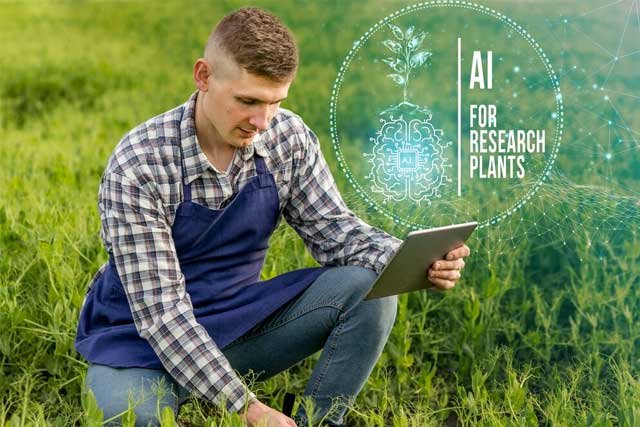In the ever-evolving landscape of agriculture, a transformative approach is taking root, reshaping traditional farming practices and cultivating a new era of efficiency, sustainability, and prosperity. Welcome to the world of E-Farming — a fusion of age-old wisdom and cutting-edge technology, where digital tools and innovations converge with the soil, creating a symphony of data-driven cultivation.
1- Understanding E-Farming: Planting the Seeds of Digital Transformation

1.1. Definition and Scope:
E-farming, also known as electronic farming or digital farming, is a paradigm shift that harnesses the power of digital tools, technologies, and data-driven approaches to optimize and enhance various aspects of agricultural practices. This comprehensive approach integrates technology into traditional farming methods, aiming to improve efficiency, productivity, and sustainability.
1.2. The Essence of E-Farming:
Imagine a world where technology intertwines with the soil, where data flows like a steady irrigation stream, and where farmers harness the power of digital innovation to cultivate their fields. This is the essence of e-farming — a holistic transformation that redefines agriculture through the seamless integration of technology.
2- Digital Tools and Technologies: Harnessing the Technological Harvest

2.1. Smart Sensors:
Just as skilled farmers read signs from the land, smart sensors act as vigilant eyes and ears for e-farmers. Monitoring environmental parameters like soil moisture, temperature, and humidity in real-time, these intelligent devices inform decisions on irrigation, nutrient application, and pest control.
2.2. Farm Management Software:
Think of farm management software as the digital command center, orchestrating all farming activities with precision. These solutions streamline record-keeping, inventory management, crop planning, and financial tracking. Acting as a hub, farmers can access crucial data, generate insightful reports, and make informed decisions about resource allocation.
3- Building Digital Infrastructure

3.1. Necessary Hardware and Software:
Establishing the necessary hardware and software is a critical aspect of building your digital infrastructure. Depending on your needs, this may involve acquiring sensors, controllers, computers, or mobile devices. Consider the reliability, compatibility, and durability of the hardware you choose, akin to selecting the right tractor for your field. When it comes to software, think of it as the brains behind your farming operation, offering powerful capabilities that enhance decision-making and streamline processes.
4- Implementing E-Farming Practices

4.1. Crop Monitoring and Management:
In the fields of e-farming, digital tools act as vigilant guardians, tirelessly monitoring our crops’ health, growth, and pest control. Picture them as your crop’s personalized caretakers, equipped with an array of sensors, drones, and smart devices. These digital guardians keep a watchful eye on your fields, allowing you to make informed decisions for optimized farming practices.
4.2. Insights from Smart Sensors:
When it comes to crop health, digital tools offer invaluable insights. Sensors embedded in the soil can measure moisture levels, helping you determine the optimal irrigation schedule and prevent under- or overwatering. Thermal imaging drones take to the skies, scanning your fields and identifying potential stress points before they become major concerns.
5- Data-Driven Decision Making

5.1. Collecting and Analyzing Data:
The first step towards data-driven decision-making is gathering relevant information. Install sensors, weather stations, and IoT devices to capture data on soil conditions, weather patterns, and crop performance. This comprehensive dataset becomes the bedrock of your decision-making process, providing a holistic view of your farm’s dynamics.
5.2. Extracting Insights:
Once you have the data in hand, it’s time to extract actionable insights. Utilize advanced analytics techniques to identify patterns, correlations, and trends within your data. For example, you can uncover the optimal irrigation schedule based on soil moisture levels or predict pest outbreaks by analyzing historical weather patterns. These insights empower you to make informed choices and optimize your farming practices.
5.3. Implementing Data-Driven Strategies:
Armed with valuable insights, it’s time to put them into action. Optimize your crop rotation plans, adjust fertilization schedules, and fine-tune irrigation techniques based on data-backed recommendations. By aligning your decisions with real-time data, you can enhance productivity, reduce costs, and promote sustainable farming practices.
5.4. Crop Monitoring and Data-Driven Decision-Making:
In the ever-evolving world of e-farming, the combination of crop monitoring and data-driven decision-making forms the bedrock of success. These digital tools and practices empower you to cultivate your crops with precision, nurture their health, and maximize productivity. So, embrace the power of digital guardians and unleash the insights hidden within your data landscape, for they hold the key to unlocking a bountiful harvest and securing a prosperous future for your farm.
6- Market Access and Sales

6.1. E-Farming in the Digital Marketplace:
In today’s digital age, farmers are no longer limited to traditional channels; instead, they have a world of online opportunities at their fingertips. Let’s delve into the realm of market access and sales in e-farming, where digital platforms and e-commerce solutions pave the way to success.
6.2. Explore Digital Platforms:
Imagine stepping into a bustling marketplace where your farm produce is showcased to a vast audience. Digital platforms like Farm-to-Table and LocalHarvest bring your farm’s bounty directly to consumers, bypassing intermediaries. These platforms connect you with conscious consumers seeking fresh, locally sourced products. Embrace this virtual marketplace and watch your farm’s sales grow exponentially.
6.3. Harness the Power of Online Marketplaces:
Just as a bustling farmer’s market offers an array of options, online marketplaces bring the same abundance to e-farmers. Platforms like Etsy, Amazon Fresh, and Shopify allow farmers to showcase products and reach a global audience. With a few clicks, customers from far and wide can access your farm’s offerings, transcending geographical boundaries.
6.4. Leverage Social Media:
Social media platforms like Instagram, Facebook, and X, a.k .a. Twitter, offer incredible marketing opportunities for e-farmers. Capture captivating images of flourishing fields engaging videos of farm life, and share stories that resonate with your audience. These platforms allow farmers to foster a community of loyal followers who eagerly await harvest updates and eagerly support the farm.
6.5. Market Access and Sales Strategies:
As we harness the power of digital platforms, direct-to-consumer models, and online marketplaces, we revolutionize the way we access markets and sell farm produce. The possibilities are limitless, and by embracing these strategies, we not only increase sales but also forge meaningful connections with our customers.
7- Overcoming Challenges in E-Farming

7.1. Local Agricultural Extension Services:
One fruitful resource is local agricultural extension services. These dedicated professionals provide valuable guidance and training tailored to the specific needs of farmers. Workshops, seminars, and one-on-one consultations help farmers navigate the digital landscape, teaching them how to leverage digital tools, interpret data, and make informed decisions.
7.2. Online Platforms and Communities:
In addition to extension services, online platforms, and communities play a pivotal role in digital education for farmers. These virtual communities serve as marketplaces for knowledge exchange. Farmers engage with experts, share experiences, and learn from one another’s successes and challenges through online forums, webinars, and courses.
7.3. Financial Considerations:
The implementation of e-farming practices requires careful financial planning and consideration. Farmers must evaluate the costs of hardware, software, connectivity, and training. However, various avenues exist to offset these costs and ensure that the benefits of e-farming outweigh the investment.
7.4. Incentives and Tax Breaks:
Incentive programs and tax breaks provide an additional avenue for financial support. Governments recognize the importance of fostering innovation in agriculture and often offer incentives for adopting sustainable and technology-driven farming practices. Familiarize yourself with these programs, as they can significantly ease the financial burden of transitioning to e-farming.
8- Environmental Sustainability

8.1. Precision Agriculture and Resource Efficiency:
Precision agriculture, a cornerstone of e-farming, minimizes resource wastage by tailoring inputs to the specific needs of each crop. From water and fertilizers to pesticides, resources are utilized with surgical precision, reducing environmental impact and fostering sustainable farming practices.
8.2. Biodiversity Conservation:
E-farming practices actively contribute to biodiversity conservation. By using targeted interventions based on data insights, farmers can minimize the ecological impact of farming activities. For instance, precision agriculture techniques prevent the overuse of pesticides, preserving the natural balance of ecosystems and promoting a healthier environment for beneficial organisms.
Conclusion
In conclusion, e-farming is not merely a technological shift; it is a holistic transformation that harmonizes age-old agricultural wisdom with the possibilities of the digital age. From precision agriculture and data-driven decision-making to market access strategies and environmental sustainability, e-farming encapsulates a myriad of practices aimed at cultivating a prosperous and resilient future for agriculture.





